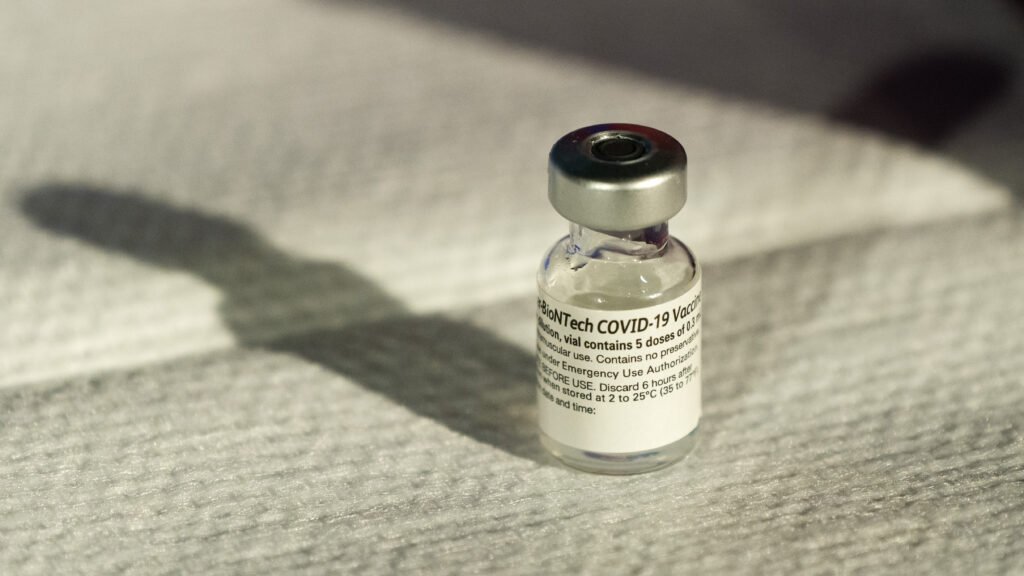, including the Pfizer-BioNTech, Moderna, and Johnson & Johnson vaccines.
The authors of the paper emphasized that more research is needed to understand the link between the Covid-19 vaccines and these lingering symptoms. They urged caution in interpreting their preliminary findings and noted that the study was not designed to establish causality between the vaccines and the observed symptoms. They emphasized that vaccines are crucial tools in the fight against Covid-19 and that the benefits of vaccination far outweigh the risks.
Despite these caveats, the paper has sparked a firestorm of controversy online, with anti-vaccine activists seizing on the study as evidence of the dangers of Covid-19 vaccines. The rapid spread of misinformation and misinterpretation of the research highlights the challenges faced by scientists in communicating complex and evolving scientific findings to the public.
It also underscores the importance of responsible reporting and critical thinking when evaluating scientific studies, especially those that have not yet undergone peer review. Preprint servers like medRxiv play a valuable role in the scientific community by allowing researchers to share their work quickly and receive feedback from their peers, but they also open the door to potential misuse and misinterpretation of preliminary findings.
As the debate over the Yale study continues to unfold, it serves as a cautionary tale about the intersection of science, social media, and public health. In a time of heightened polarization and mistrust, it is more important than ever for scientists, journalists, and the public to approach new research with skepticism, curiosity, and a commitment to the truth.
In 2023, Pfizer, Moderna, and Johnson & Johnson were the leading players in the race to develop effective vaccines against the COVID-19 virus. However, Johnson & Johnson faced a setback when they had to withdraw their vaccine from the market due to safety concerns. This decision was made after reports of potential side effects emerged, causing the company to prioritize the safety of the public over profit.
Vaccine safety researchers are constantly faced with the challenge of balancing the need to report any potential harm caused by vaccines while also being wary of how this information can be misinterpreted by anti-vaccine groups. It is not uncommon for initial safety signals to be proven false after rigorous study, as was the case with the H1N1 flu pandemic in 2009. In some instances, however, safety signals do turn out to be accurate, leading to the withdrawal of vaccines from the market.
The decision to withdraw a vaccine is never taken lightly, as it can have far-reaching implications for public health. The CDC and its vaccine advisory panel carefully consider all available data before making such a decision, weighing the risks and benefits of vaccination. Vaccine safety researchers like Edward Belongia and Akiko Iwasaki are acutely aware of the potential consequences of their work being misinterpreted by the public.
While the release of preprints can help disseminate information quickly, it also presents challenges in terms of public perception. Science literacy among the general population is low, making it difficult for people to understand the iterative nature of scientific research. Despite these challenges, researchers like Iwasaki and Belongia remain committed to transparency and keeping the public informed about vaccine safety.
In the case of Johnson & Johnson’s vaccine, the decision to withdraw the vaccine was a testament to the company’s commitment to public health and safety. While the incident may have caused some to question the safety of vaccines in general, it also highlighted the importance of rigorous safety monitoring and swift action in response to any potential concerns. Vaccine safety researchers will continue to navigate the complex landscape of vaccine safety, ensuring that the public is kept informed and protected. In today’s digital age, the spread of misinformation and disinformation has become rampant, making it challenging to maintain public trust. The uncertainty surrounding various issues is often drowned out by a chorus of false information, leaving many people confused and misinformed. Finding a solution to this problem is crucial to ensure that accurate information prevails and trust in public discourse is maintained.
One way to tackle this issue is by promoting media literacy and critical thinking skills. By educating the public on how to spot misinformation and verify sources, individuals can become more discerning consumers of information. Schools, community organizations, and online platforms can play a role in providing resources and training to help people navigate the vast amount of information available to them.
Another approach is for social media platforms and news outlets to take responsibility for the content they host and promote. Implementing fact-checking mechanisms, labeling false information, and promoting credible sources can help combat the spread of misinformation. Additionally, algorithms can be adjusted to prioritize reliable sources and diverse viewpoints, rather than sensationalist or misleading content.
Furthermore, fostering a culture of transparency and accountability among public figures, organizations, and institutions is essential. By being open about the uncertainties and complexities of certain issues, leaders can build trust with the public and encourage honest dialogue. Admitting when mistakes are made and correcting misinformation promptly can also help rebuild credibility and maintain trust.
Ultimately, it is a collective effort to combat misinformation and preserve public trust. By promoting media literacy, holding platforms accountable, and fostering transparency, we can create an environment where accurate information prevails and uncertainty is met with informed discussion rather than confusion. It is only by working together that we can overcome the challenges posed by misinformation and disinformation in today’s society.


